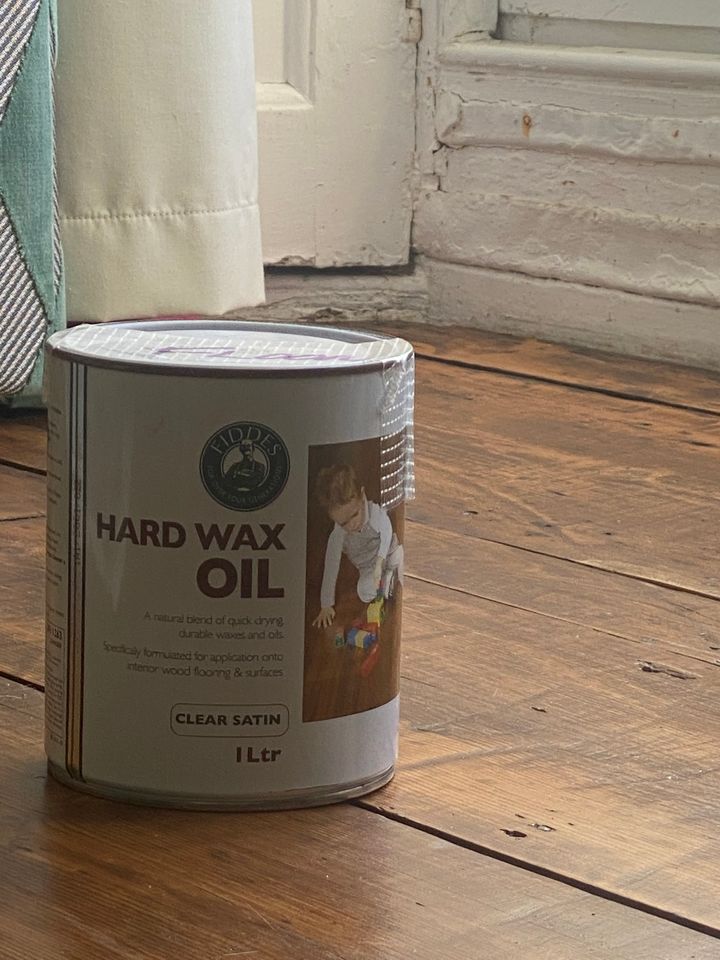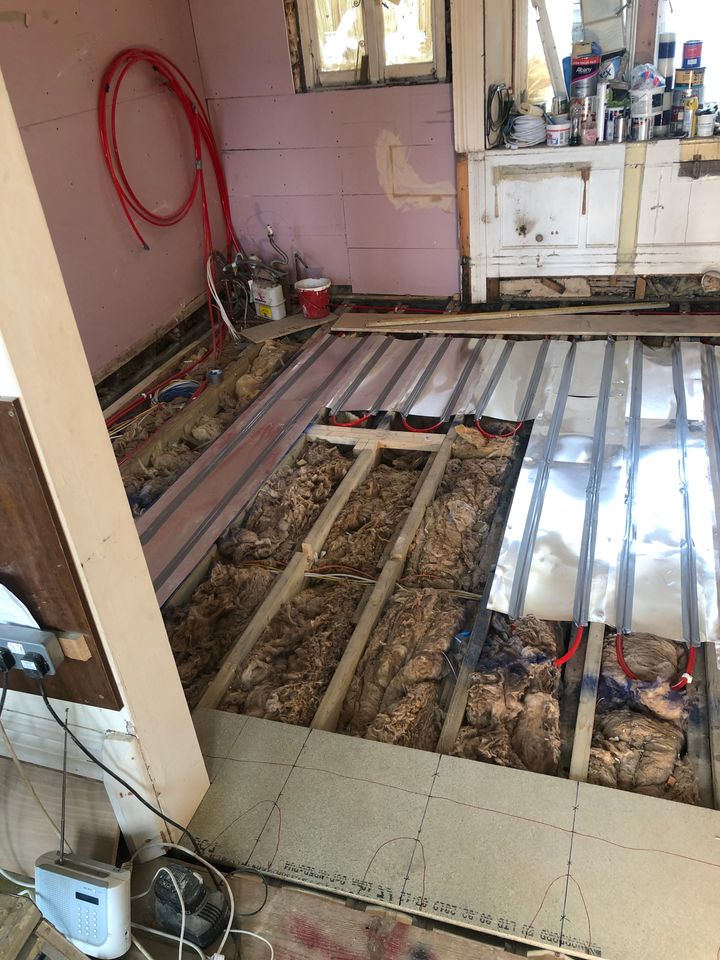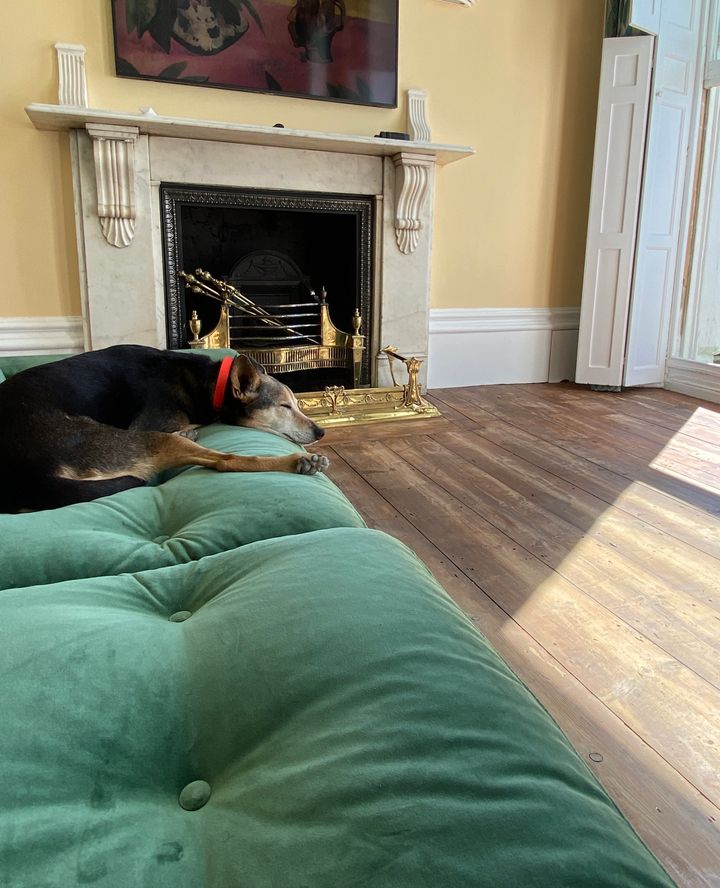Wet underfloor heating, how should I use it?
Discussion
Just moved into a house which has a electric boiler (unfortunately) which runs underfloor heating in the hall, kitchen and living room
Previously I’ve lived in houses with gas boilers and radiators so you just set up the schedule and as it was a new build it retained heat and didn’t take long to heat up when it had been off a while
With underfloor heating, which is a wet system in the screed, what is the best way to use it? I’m thinking just leaving it at a constant 18 degrees, then having a schedule so it’s constant 20 in the day at the weekends, to come on at 6am when we get up at 8?
We both work from home on a Friday but apart from that we are at work Monday - Thursday 8-5 so I guess set it to 18, then set it to come up to 20 about a hour before we arrive home? Then just constant 20 on the Friday?
Probably not worth having on in the morning if we’re getting up at 7 and leaving at 8? I can’t see it dropping much over night
The new house is a converted barn, which is well insulated and had a B EPC rating
Any advice?
Previously I’ve lived in houses with gas boilers and radiators so you just set up the schedule and as it was a new build it retained heat and didn’t take long to heat up when it had been off a while
With underfloor heating, which is a wet system in the screed, what is the best way to use it? I’m thinking just leaving it at a constant 18 degrees, then having a schedule so it’s constant 20 in the day at the weekends, to come on at 6am when we get up at 8?
We both work from home on a Friday but apart from that we are at work Monday - Thursday 8-5 so I guess set it to 18, then set it to come up to 20 about a hour before we arrive home? Then just constant 20 on the Friday?
Probably not worth having on in the morning if we’re getting up at 7 and leaving at 8? I can’t see it dropping much over night
The new house is a converted barn, which is well insulated and had a B EPC rating
Any advice?
There’s a bit of a myth about leaving wet UFH on constantly. It’s a little nuanced …
Most manuals suggest:
Find your comfort heat for the room and have that set as your ‘on’ setting during the day.
Then have a setback temp around 2-3 degrees less to run overnight.
But it really depends on the slab the pipes are in and how quickly it warms up and cools down.
Most manuals suggest:
Find your comfort heat for the room and have that set as your ‘on’ setting during the day.
Then have a setback temp around 2-3 degrees less to run overnight.
But it really depends on the slab the pipes are in and how quickly it warms up and cools down.
It'll take some experimentation to see how quickly it responds to heat inputs which is largely dependent on the thickness of the slab/screed.
My parent's system has the pipes set deep in a thick concrete slab and so it takes many hours or even days to heat up and cool back down. They generally just leave it set at the desired temperature all the time which mostly works OK with a couple of exceptions.
1) if the weather suddenly warms up or there's lots of sunshine - the house rapidly overheats and there's little you can do but open the windows and wait for the slab to stop belting out the heat.
2) if the opposite happens and there's a sudden cold snap it takes a long time for the slab to warm up and so the house gets pretty cold. They've solved it with a woodburner but previously resorted to jumpers and thick socks.
Your system might be set in a much thinner, and thus more responsive slab but something to bear in mind.
My parent's system has the pipes set deep in a thick concrete slab and so it takes many hours or even days to heat up and cool back down. They generally just leave it set at the desired temperature all the time which mostly works OK with a couple of exceptions.
1) if the weather suddenly warms up or there's lots of sunshine - the house rapidly overheats and there's little you can do but open the windows and wait for the slab to stop belting out the heat.
2) if the opposite happens and there's a sudden cold snap it takes a long time for the slab to warm up and so the house gets pretty cold. They've solved it with a woodburner but previously resorted to jumpers and thick socks.
Your system might be set in a much thinner, and thus more responsive slab but something to bear in mind.
LaserTam said:
Because it takes a while to warm up (and cool down) because it warms the slab, if you turn the temp up at say 6am, you won't notice a difference until dinner time (maybe exaggeration). So probably just leave it at your desired temp 24x7.
We've wet underfloor throughout our house.You should be feeling a difference within an hour, maybe two, tops.
We keep rooms we are using at a fallback temp of 18 degrees, then boost to 21 degrees a couple of hours ahead of using the space.
Snow and Rocks said:
Deep Thought said:
You should be feeling a difference within an hour, maybe two, tops.
As I said above, you can't generalise, the response time is largely dependent on the thickness of the slab and the depth of the pipes.I’ve had wet systems that have taken hours to warm up so are able to be turned off for hours once up to temp and others that operated much more like radiators and could be used more reactively to heat requirements.
One problem with UFH is that it reacts so slowly that you are never really convinced it is working.
Apparently the heating effect is radiant heat and not convection which happens with radiator but what that means is anybody's guess.
Understand where the heating feed and return pipes run and feel them to tell if things are working and understand the temperature difference.
Have a look at the zone actuators which usually show a red indicator when open and understand how slowly that they react to changes on the thermostats.
Using a thermal image camera such as Topdon on your phone is fascinating to see where the floor is heating up.
Our UFH heats up fairly rapidly and after a few hours from stone cold you can feel the difference but only if you walk around barefoot and you won't feel anything in shoes but of course the whole room and the occupants are now enjoying the radiant heat even though it is hardly noticeable.
Everything happens so slowly that there is no point turning the heating to max for a quick warm up. To avoid massive temperature overshoots only make 1 or 2 deg C adjustments to the set point temperature on a daily basis.
If the day starts cold and then the sun comes out then temperature overshoots can occur and it can be quite uncomfortable.
Our heating uses a Tado Smart Heating Controller and each individual room or zone can have its own hourly temperature profile. The temperature set points are set for the UFH to heat up for a few hours and then rest at a lower temperature for 1 hour and this avoids temperature overshoots.
Apparently the heating effect is radiant heat and not convection which happens with radiator but what that means is anybody's guess.
Understand where the heating feed and return pipes run and feel them to tell if things are working and understand the temperature difference.
Have a look at the zone actuators which usually show a red indicator when open and understand how slowly that they react to changes on the thermostats.
Using a thermal image camera such as Topdon on your phone is fascinating to see where the floor is heating up.
Our UFH heats up fairly rapidly and after a few hours from stone cold you can feel the difference but only if you walk around barefoot and you won't feel anything in shoes but of course the whole room and the occupants are now enjoying the radiant heat even though it is hardly noticeable.
Everything happens so slowly that there is no point turning the heating to max for a quick warm up. To avoid massive temperature overshoots only make 1 or 2 deg C adjustments to the set point temperature on a daily basis.
If the day starts cold and then the sun comes out then temperature overshoots can occur and it can be quite uncomfortable.
Our heating uses a Tado Smart Heating Controller and each individual room or zone can have its own hourly temperature profile. The temperature set points are set for the UFH to heat up for a few hours and then rest at a lower temperature for 1 hour and this avoids temperature overshoots.
Bear in mind that underfloor controllers understand and learn the lag.
You tell them you want it at 20 degrees for 7am and once it has learnt the lag that is what it will do.
This process then gets messed up if it is very hot or cold and as other have said you then wait or open the windows.
We used to run the whole house at 23 but now do 21 which significantly reduces the overheats.
You tell them you want it at 20 degrees for 7am and once it has learnt the lag that is what it will do.
This process then gets messed up if it is very hot or cold and as other have said you then wait or open the windows.
We used to run the whole house at 23 but now do 21 which significantly reduces the overheats.
Put min under the original 200 year floor boards, initially was told they would warp by a expert UF consultant trying to flog an engineered wood floor, turn on Sept thru April thru nest thermostat at a gentle 19c 10pm to 6am then 23 all other times-love to hear the floors creaking like an old ship in the morning .
5 years in and love walking around bare foot, sorry only pictures I could find on my phone.


5 years in and love walking around bare foot, sorry only pictures I could find on my phone.
Edited by Good Plan Ted on Monday 15th September 05:20
Jeremy-75qq8 said:
Bear in mind that underfloor controllers understand and learn the lag.
You tell them you want it at 20 degrees for 7am and once it has learnt the lag that is what it will do.
This process then gets messed up if it is very hot or cold and as other have said you then wait or open the windows.
We used to run the whole house at 23 but now do 21 which significantly reduces the overheats.
Agree although I think the only thing that really messes ours up is solar gain later in the day in spring and autumn. I have found the Heatmiser Neo stats to be pretty good for telling them what you want and letting them figure it out.You tell them you want it at 20 degrees for 7am and once it has learnt the lag that is what it will do.
This process then gets messed up if it is very hot or cold and as other have said you then wait or open the windows.
We used to run the whole house at 23 but now do 21 which significantly reduces the overheats.
OP, curious if your system has a storage tank, if so then ensuring it is set up to heat using a low cost tariff will help immensely.
Arrivalist said:
...Find your comfort heat for the room and have that set as your on setting during the day.
Then have a setback temp around 2-3 degrees less to run overnight.
But it really depends on the slab the pipes are in and how quickly it warms up and cools down.
This Then have a setback temp around 2-3 degrees less to run overnight.
But it really depends on the slab the pipes are in and how quickly it warms up and cools down.

Find a level you're happy with and work from there.
We have zones across the ground floor and just close the door if the room isn't in use - e.g. study goes low at 5pm, whereas Lounge comes up at 4pm.
8-P said:
I hope it s more cost effective to run than my electric underfloor heating that we never use.
We have it in our bathroom as fitted by the previous owners when they renovated the house. I have never once turned it on in the five years we have lived here.We have gas central heating with radiators upstairs and wet underfloor heating downstairs. I just leave the thermostat set to 20.5 and it switches on and off like normal heating. As you say, it can take an hour or so to heat up, but I don't do anything different to normal GCH with all radiators.
Quattr04. said:
Just moved into a house which has a electric boiler (unfortunately) which runs underfloor heating in the hall, kitchen and living room
Is that genuinely a 1:1 electric boiler not a heatpump of some kind?I am shuddering about the bills already, and do not understand why if there is only 'leccy someone would not just fit electric mats instead of the complexity of wet UFH with electric boiler. They both run at 1:1 surely, but with added losses of pumps etc for the boiler....
POIDH said:
Is that genuinely a 1:1 electric boiler not a heatpump of some kind?
I am shuddering about the bills already, and do not understand why if there is only 'leccy someone would not just fit electric mats instead of the complexity of wet UFH with electric boiler. They both run at 1:1 surely, but with added losses of pumps etc for the boiler....
Unfortunately yes it is a electric boiler that heats the hot water like a combi boiler and then provides hot water for the UFH tooI am shuddering about the bills already, and do not understand why if there is only 'leccy someone would not just fit electric mats instead of the complexity of wet UFH with electric boiler. They both run at 1:1 surely, but with added losses of pumps etc for the boiler....
We are renting this place, I’ve had the UFH on set to 20 for the last couple of days and it seems to be retaining the heat very well.
I’m expecting a large bill but we don’t have a water or sewers bill as we have a private supply from the landlord so at least that saves £50 a month or so, plus broadband is included. So il only be about £100,000 down a month for the electric
POIDH said:
Is that genuinely a 1:1 electric boiler not a heatpump of some kind?
I am shuddering about the bills already, and do not understand why if there is only 'leccy someone would not just fit electric mats instead of the complexity of wet UFH with electric boiler. They both run at 1:1 surely, but with added losses of pumps etc for the boiler....
Normally there is a storage tank which at least allows shifting of the demand to an off peak tariff.I am shuddering about the bills already, and do not understand why if there is only 'leccy someone would not just fit electric mats instead of the complexity of wet UFH with electric boiler. They both run at 1:1 surely, but with added losses of pumps etc for the boiler....
Gassing Station | Homes, Gardens and DIY | Top of Page | What's New | My Stuff




